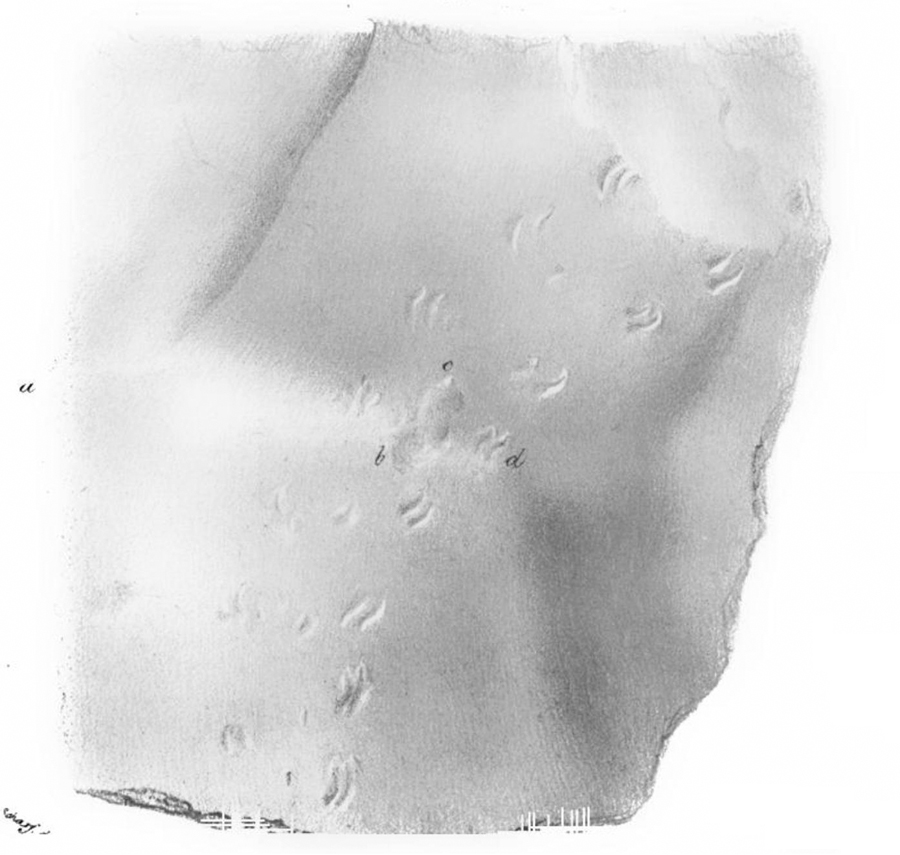the surfaces of the oolite beds

Plate 5, Fig. 2 (of 2)
cropped, illustrating
G. Poulett Scrope (1797-1876 *). “On the Ripple-Marks and Tracks of Certain Animals in the Forest Marble.” The Journal of the Royal Institution of Great Britain. Vol. 1 (1831) : 538-546
Harvard copy, digitized April 6, 2007
“To return to the ripple-beds of forest marble. I had often admired the sharpness and beauty of their wrinkles, appearing as if freshly moulded by the receding tide, and carrying the observer back at once to the moment when the sea broke upon the narrow shores of this infant island. I had often remarked upon their surface sinuous traces, like the track of some animal burrowing in the sand, but failed in satisfying myself to what they were owing (fig. 1, pl. 5). Having, in the summer of last year, visited the sandstone quarries of Corncockle Muir, in Dumfriesshire, where several impressions of the footsteps of tortoises have been found, it occurred to me to examine minutely the surfaces of the oolite beds, which, particularly when rippled, are as smooth and fresh in appearance as when first formed, and likely therefore to have retained any impressions made upon them of similar foot-tracks. ¶ I had not long looked for such before I found a very great abundance of tracks...” (fig. 2, pl. 5).
discussion at pp 544-545
—
Lithograph by George Johann Scharf (1788-1860 *).
—
“Stone is the material in which the collective memory of a life or an event in the past is immortalized and becomes an object of worship.”
from Anita Becker, description of Harun Farocki his film Transmission (2007)
via
folds and fissures (long gone, much missed)
tags:
lithography; memory
George Johann Scharf; G. P. Scrope, “On the Ripple-Marks and Tracks of Certain Animals in the Forest Marble” (1831); Harun Farocki